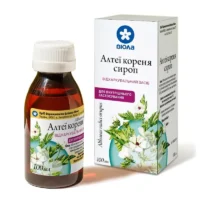Description
Paracetamol (paracetamol) Rectal Suppositories 150 mg. №10
Ingredients
- Each rectal suppository contains 150 mg of paracetamol.
Dosage
- The usual dose is one suppository every 4-6 hours as needed for pain or fever.
Indications
- Paracetamol suppositories are indicated for the relief of mild to moderate pain and fever.
Contraindications
- Do not use if allergic to paracetamol or any other ingredients in the suppository.
Directions
- Gently insert the suppository into the rectum. Follow the instructions provided by your healthcare provider.
Scientific Evidence
Paracetamol is a well-established analgesic and antipyretic medication with a proven safety profile. Studies have shown its effectiveness in reducing pain and fever in various conditions. Research published in the Journal of Pain and Symptom Management demonstrated the efficacy of rectal paracetamol in providing rapid and reliable relief in patients unable to take oral medications.
Additional Information
It is important to adhere to the recommended dosage and not exceed the maximum daily limit to avoid the risk of overdose. If symptoms persist, consult a healthcare professional. Keep the suppositories out of reach of children.
Pharmacological Effects
Paracetamol works by inhibiting the production of prostaglandins in the brain that are responsible for pain and fever. It acts centrally in the hypothalamus to reduce the body’s temperature set-point. Unlike nonsteroidal anti-inflammatory drugs (NSAIDs), paracetamol has minimal anti-inflammatory effects, making it a preferred choice for individuals who cannot tolerate NSAIDs.
Clinical Trials and Comparative Effectiveness
In a comparative study published in the Journal of Clinical Pharmacy and Therapeutics, paracetamol suppositories were found to be as effective as oral paracetamol in managing postoperative pain with the added benefit of faster onset of action. The rectal route of administration provides an alternative for patients who are unable to take oral medications.





